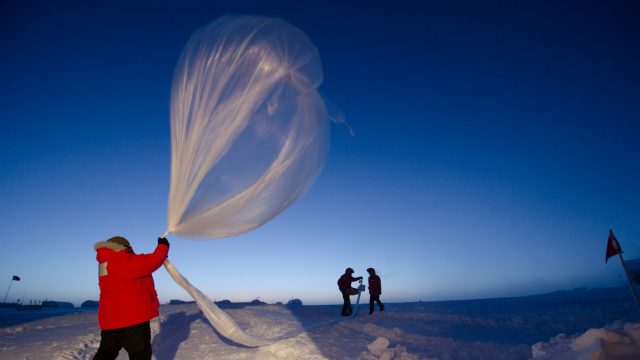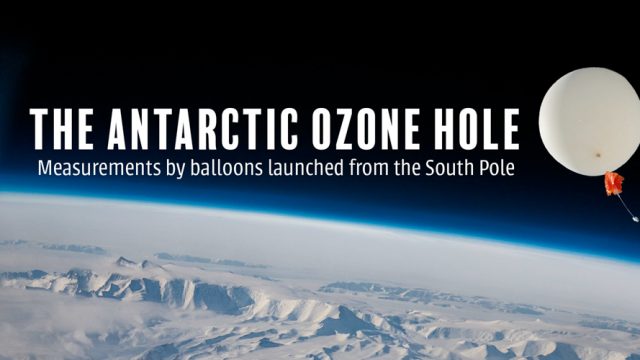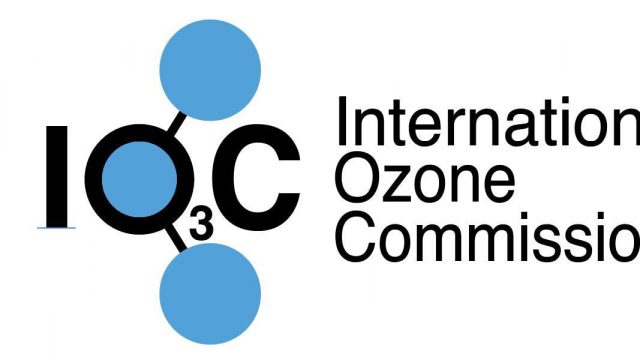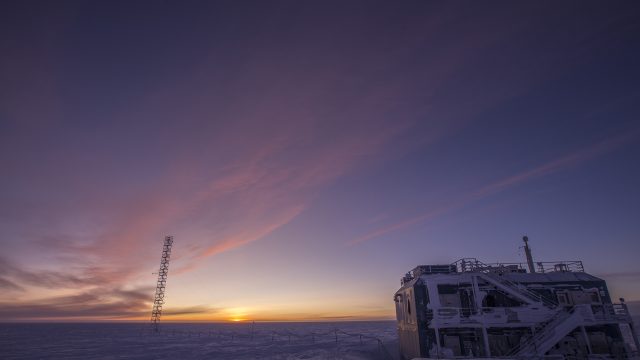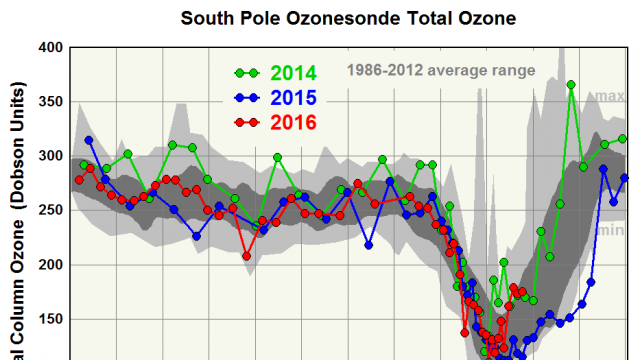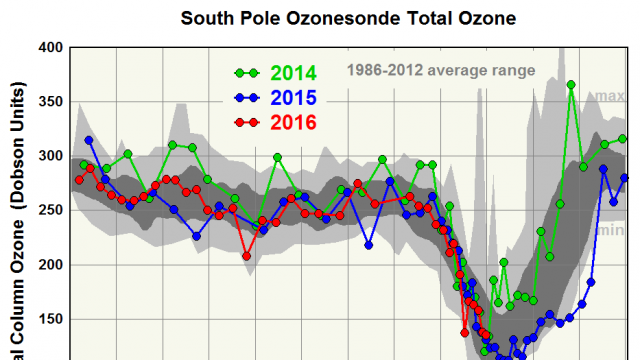Measuring Ozone in the Atmosphere The majority of ozone in the atmosphere is found high above the surface in the “Ozone Layer.” Stratospheric ozone is typically measured as Total Column Ozone, a number representing all the ozone molecules located in a column of air extending from the surface all the way to the edge of… Read More
The Ozone Layer is the name given to naturally occurring high concentrations of ozone located high up in the stratosphere between 35,000 – 160,000 feet. The ozone layer is important to life on Earth because of its ability to filter out harmful doses of ultraviolet light from the Sun that has the ability to damage… Read More
By Irina Petropavlovskikh, Secretary of the International Ozone Commission and a CIRES and NOAA scientist September 16th is International Day for the Preservation of the Ozone Layer, commemorating the 1987 anniversary of the signing of the Montreal Protocol on Substances that Deplete the Ozone Layer. Hailed as an example of exceptional international cooperation for the… Read More
By Patrick Cullis, CIRES and NOAA scientist NOAA’s Global Monitoring Division carries out balloon launches to measure the ozone layer and annual development of the Antarctic Ozone Hole from the Amundsen-Scott South Pole Station. This year’s lowest total ozone column measurement of 136 Dobson Units on September 25th was relatively high when compared to the… Read More
By Patrick Cullis, CIRES and NOAA scientist After six straight months of darkness, the Sun has finally returned to the sky above the Amundsen-Scott South Pole Station. NOAA scientists working at the station and collecting air samples at the Atmospheric Research Observatory (ARO) experience only one sunrise, and one sunset per year due to the… Read More
By Patrick Cullis, CIRES and NOAA scientist The Ozone Layer protects life on Earth by filtering out harmful ultraviolet (UV) radiation from the sun that is a primary cause of skin cancer and cell damage in plants and animals. In the 1970’s scientists linked chlorofluorocarbons (CFCs) developed for use in air conditioners and aerosol spray cans… Read More
By Irina Petropavlovskikh, CIRES and NOAA scientist International Day for Preservation of Ozone Layer will be celebrated on September 16, 2017 under the auspices of the United Nations Environmental Program ( UNEP), and many international organizations will join in celebration.After 197 countries ratified the multilateral environmental agreement of the Montreal Protocol 30 years ago, UNEP… Read More
The 2016 formation of the Antarctic Ozone Hole turned out to be fairly “average.” After 2015, where an incredibly stable polar vortex held the depletion region together well in to December, NOAA scientist were curious how 2016 would progress. Although the vortex remained fairly stable and circular, the depletion region never quite reached the size seen last… Read More
By Refael Klein, NOAA Corps officer, from South Pole, October 3 The sun sits two fingers above the horizon. It is obscured by fine, white, icy clouds, but nonetheless you can make out its circular shape—dimming and brightening with each gust wind and slight fluctuation in temperature. Pulsing, blinking, fluttering, stuttering, in a dead language,… Read More
With sunrise finally arriving and the South Pole beginning six straight months of daytime, destruction of protective ozone continues high above in the stratosphere. As can be seen in the plot above, 2016 continues marching toward a minimum measurement of total column ozone during the annual formation of the Antarctic Ozone Hole. Scientists at Boulder’s… Read More
